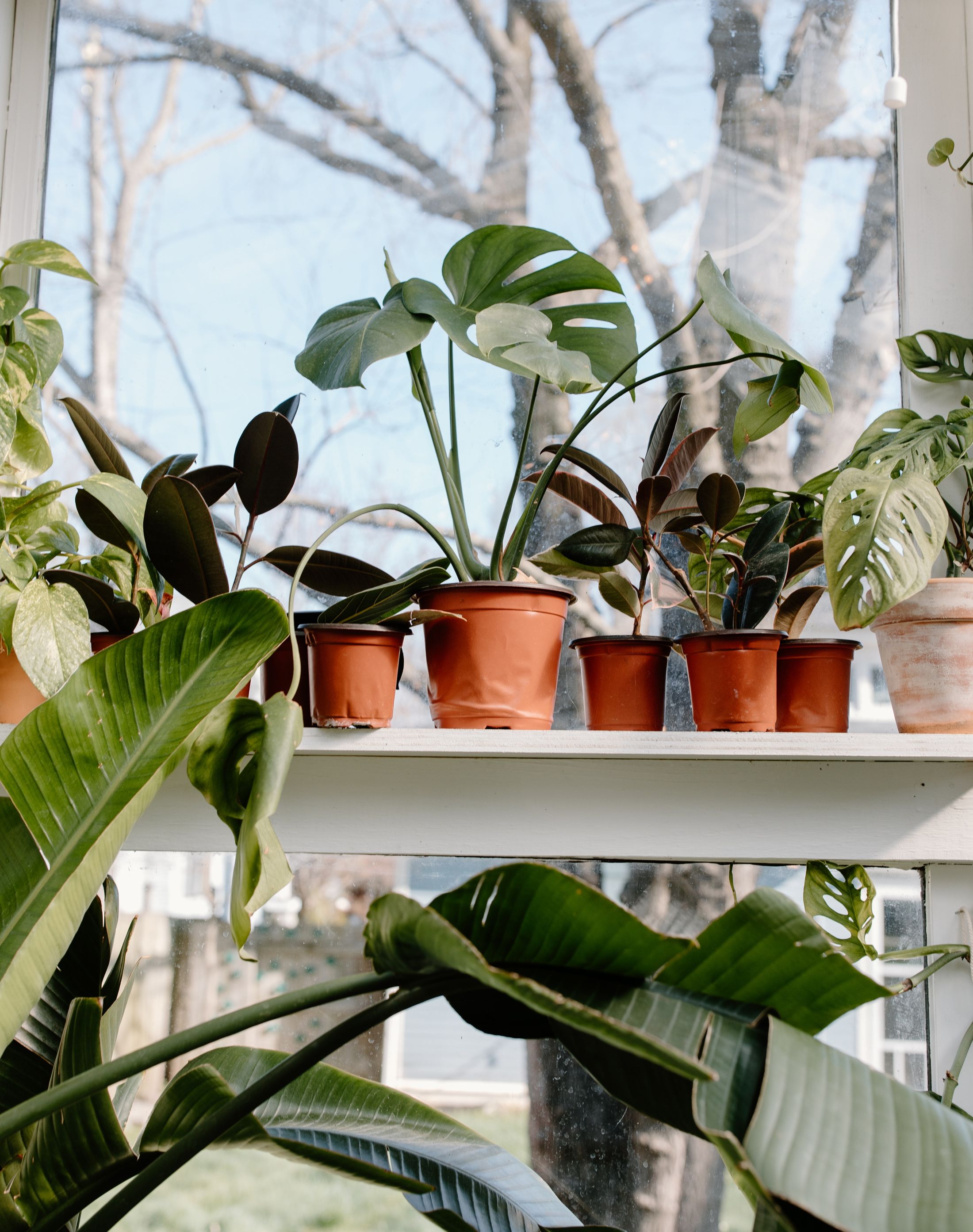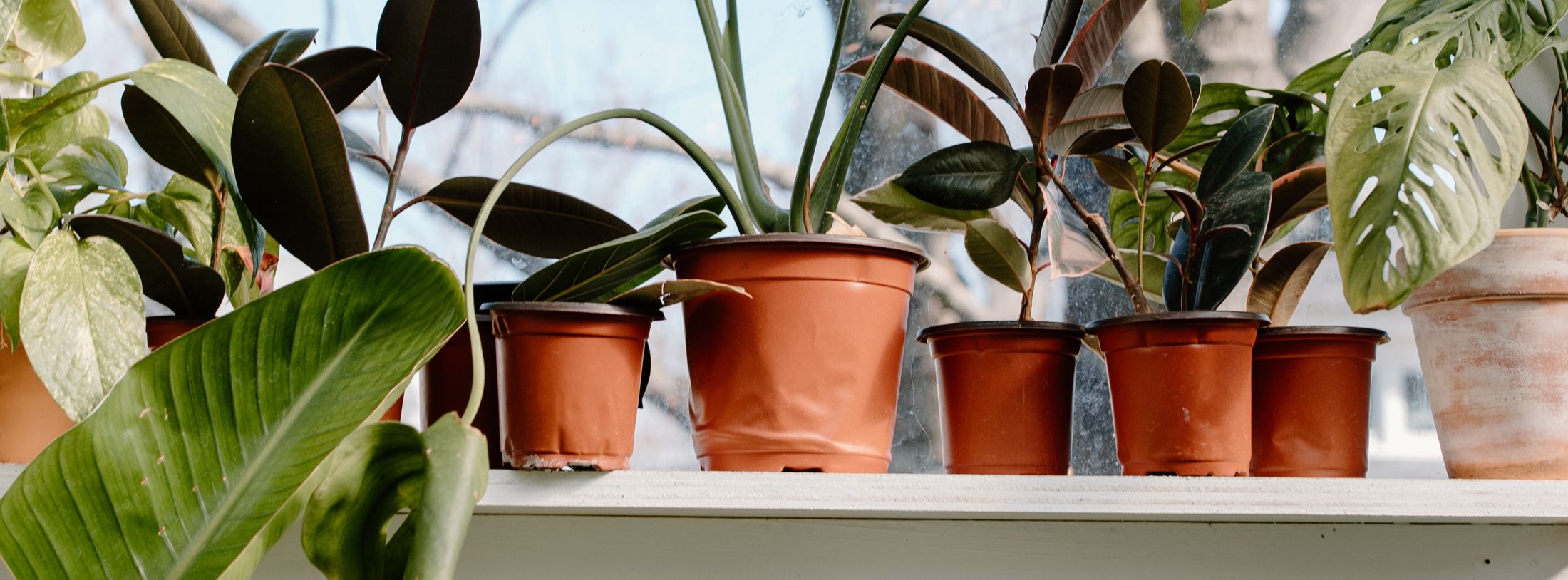Indoor air can be 2 to 5 times more polluted than outdoor air, according to the EPA. And with VOCs coming from everyday sources like paint, furniture, and cleaning products, it’s no surprise that “air-purifying plants” are having a moment. But the big question remains:
Do they actually work?
Let’s take a closer look at the science, and introduce a plant-based system that’s changing everything.
Do Air Purifying Plants Really Work?
The idea is appealing: houseplants that clean the air while beautifying your home. It’s true that plants have natural mechanisms that can help remove some pollutants like carbon dioxide and nitrogen oxides. But when it comes to VOC pollution, the type linked to headaches, poor sleep, and long-term health risks, the story is a little more complicated.
How Effective Are Plants at Air Purification?
Research shows that certain indoor plants can reduce VOC levels under ideal lab conditions. For example:
- Hedera helix has shown the ability to reduce formaldehyde (HCHO)
- Areca palms have demonstrated some VOC reduction in controlled settings
- One study showed a decrease in TVOC levels after adding plants to classrooms in Portugal
But here’s the catch: you would need dozens of houseplants per room to make a measurable impact in a typical home. That’s because standard houseplants absorb VOCs passively and only in small amounts.
The Best Plants for Air Quality (Updated for 2025)
These popular plants offer aesthetic and symbolic value, and some do contribute to minor air filtering:
- Spider Plant – Filters carbon monoxide and formaldehyde. Releases oxygen at night
- Peace Lily – Helps remove formaldehyde and benzene
- Weeping Fig – Targets formaldehyde and other indoor air pollutants
- Snake Plant – Removes benzene and trichloroethylene
- Chinese Evergreen – NASA-listed for formaldehyde and benzene removal
- English Ivy – Known to remove formaldehyde, benzene, and xylene
- Bamboo Palm – Filters formaldehyde and adds humidity
- Dracaena – Targets formaldehyde, benzene, and more
- Aloe Vera – Removes multiple VOCs and offers added health benefits
- Golden Pothos – A favorite for reducing benzene, mold-related particles, and more
While these plants are helpful in theory, they simply can’t handle continuous VOC reduction in real-world conditions.
Why Houseplants Alone Aren’t Enough to Clean Your Air
We ran our own lab tests on popular air purifying plants, including Peace Lily, Snake Plant, Spider Plant, and Golden Pothos, to measure how they perform in VOC remediation.
Results showed:
- Minimal impact on formaldehyde
- No measurable ability to remove toluene, one of the most common and dangerous indoor VOCs
You would need an indoor jungle to reach meaningful results. So unless you’re planning to turn your bedroom into a greenhouse, it’s time for a better solution.
Introducing Power Drops: A Bioengineered Boost to Your Houseplants
At Neoplants, we created Power Drops to solve the problem traditional houseplants can’t. These are bioengineered microorganisms that, when added monthly to the soil of your houseplants, make them up to 30 times more effective at breaking down VOCs.
They’re designed to target the four most harmful indoor VOCs:
- Formaldehyde
- Benzene
- Toluene
- Xylene
Power Drops don’t just trap pollutants. They enable your plants to actively metabolize VOCs and recycle them into harmless organic compounds like amino acids and sugars. It’s plant care with a mission.
Or Try Neo Px: The Complete Plant-Based Air Purification System
Looking for a ready-made solution? Our Neo Px system combines a bioengineered plant with Power Drops and a custom planter designed for airflow, hydration, and performance.
Neo Px works continuously without noise or filters to remove the pollutants that other plants can’t. And yes, it’s still a real, living plant.
Frequently Asked Questions
Do indoor plants really purify the air? Yes, but only in small amounts. Most can’t significantly reduce VOCs without support.
Which plant is best for improving air quality? Golden Pothos is often cited, but its impact is limited without Power Drops or enhanced microbiomes.
Can plants replace air purifiers?Not on their own. That’s why we created a system that enhances nature’s ability using science.
How is Neo Px different?Neo Px includes a living plant, Power Drops, and a performance-optimized planter. It’s designed to reduce VOCs continuously and effectively, with no fans or filters.
More FAQs
The Bottom Line
Houseplants are beautiful, calming, and yes, slightly helpful for air quality. But if you're serious about removing indoor air pollutants like formaldehyde, benzene, toluene, and xylene, you need something more powerful.
Whether you're adding Power Drops to your favorite houseplants or trying the Neo Px system, you're choosing a smarter way to clean the air.
Want cleaner air without the jungle? Discover Power Drops and Neo Px
Sources:
Interior Landscape Plants for Indoor Air Pollution AbatementOpens in a new tab.
Reduce Indoor Air Pollution with Houseplants Part 1: Aloe Vera and Peace LilyOpens in a new tab. | Santa Fe Extension Master Gardeners
Spider Plants and Clean AirOpens in a new tab. | The National Wildlife Federation
Do Snake Plants Clean The Air?Opens in a new tab. | Breathe Better Air
Reduce Indoor Air Pollution with Houseplants Part 1: Aloe Vera and Peace LilyOpens in a new tab. | Santa Fe Extension Master Gardeners
Study: Indoor air cleaners fall short on removing volatile organic compoundsOpens in a new tab. | MIT News
Plants that Clean the AirOpens in a new tab. | Green America
11 Houseplants That Clean the Air You BreatheOpens in a new tab. | Goodnet
Houseplants suck up air pollutants that can sicken peopleOpens in a new tab. | SN Explores
Investigation of A Potted Plant (Hedera helix) with Photo-Regulation to Remove Volatile Formaldehyde for Improving Indoor Air QualityOpens in a new tab. | Aerosol and Air Quality Research
Mitigation of indoor air pollutants using Areca palm potted plants in real-life settingsOpens in a new tab. | SpringerLink
Could Houseplants Improve Indoor air Quality in Schools?Opens in a new tab. | T and F Online

